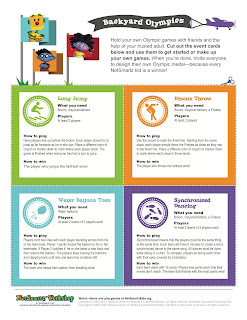We are lucky to have so many methods of staying interconnected today, but with it comes so much responsibility. Some of the best methods for teachers, I think, are email, blogs, classroom websites, and secure networks for sharing information such as
edmodo.com,
scriblink.com, and various classroom management websites and collaborative websites. In evaluating some online communication tools, I found a great article at
http://gigaom.com/collaboration/10-tools-to-improve-communication/, it encourages me to use my mobile more to communicate, and I love their shared to do list tool. If teachers shared their to do lists more, the world may be a better place! Well, at least a less stressful place for those of us in the education field. Now, whether I would skype with a class in France, it may be a little too new-age for my liking (not to mention the time difference), but at least I know how to do things like that and other online collaborative platforms.
I was also wondering what the most popular methods of online communication were for teachers, and that was a little more difficult to find. However, I did find this chart about the preferences of teachers for educational technology needs in 2011:
Retrieved from http://www.emergingedtech.com
Using online communication tools helps to fulfill an important NETS standard for teachers, and that is:
# 3. Model Digital Age Work and Learning
Teachers exhibit knowledge, skills, and work processes representative of an innovative professional in a global and digital society.
a. Demonstrate fluency in technology systems and the transfer of current knowledge to new technologies and situations
b. Collaborate with students, peers, parents, and community members using digital tools and resources to support student success and innovation
c. Communicate relevant information and ideas effectively to students, parents, and peers using a variety of digital age media and formats
d. Model and facilitate effective use of current and emerging digital tools to locate, analyze, evaluate, and use information resources to support research and learning
As teachers, we must constantly set an example that we are on the cusp of technological developments so we can demonstrate a model digital age citizenship to our students. We can also help set a high standard for communications and improve our communities. By insisting on using technological methods for students and parents to keep up with school and class developments, we can encourage people to learn more about technology, and hopefully use it! To supplement this point, here's a great video I've found where Texas school teachers are pledging to go paperless. It's pretty progressive and totally cool if you ask me!
With some luck and maybe a few grants, I'm hoping my classroom's students will one day look more like this:
Retrieved from http://lenabug31.blogspot.com/2011/04/technology-in-schools-ipads-for.html
I think you'll find there are also tons of how-to videos online about how to better implement technology in your classroom!





